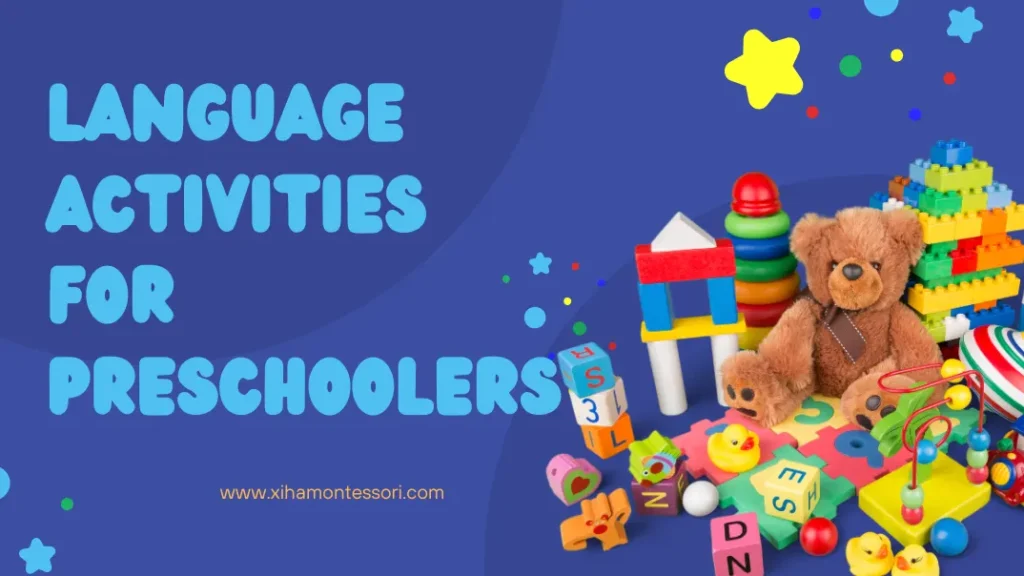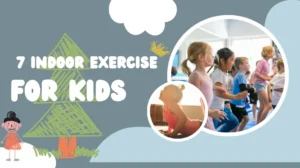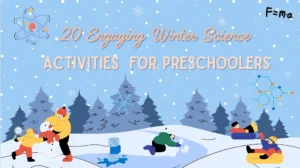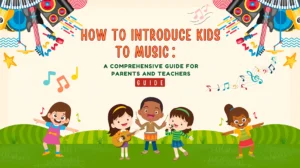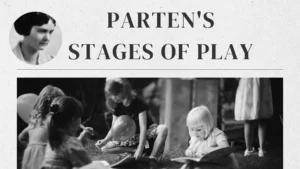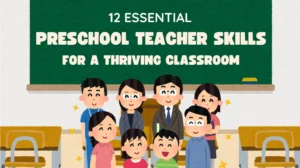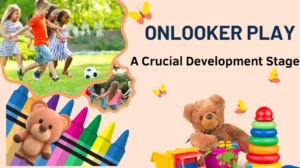As a parent or educator, helping preschoolers develop strong language skills is crucial for their overall development. But finding the right activities to keep them engaged can be challenging. So, how do we make language activities for preschoolers fun and effective for young children?
Language activities for preschoolers should be both enjoyable and developmentally appropriate. Engaging in games, stories, and songs helps kids naturally develop communication skills while having fun. Here are 16 fun language activities that can greatly impact their learning.
The key is to combine learning with play, fostering an environment where preschoolers can explore language freely while interacting with peers and adults.
Language in Early Childhood
Language development begins at birth, with babies listening to and absorbing the sounds around them. In early childhood, the brain is highly adaptable and forms new connections rapidly, making it the prime time to introduce language development activities for preschoolers. From babbling to forming complex sentences, this period is essential for a child’s cognitive and social growth.
During these early years, language helps children make sense of the world, form relationships, and express their thoughts and feelings. It’s not just about learning vocabulary; it’s also about understanding how language works and how to use it effectively. For preschoolers, exposure to preschool activities for language and literacy through daily interactions and structured activities helps lay the foundation for reading, writing, and communication skills that will serve them throughout their lives.
Importance of Language Development
Language development is more than just speaking; it impacts all areas of a child’s growth. Here’s why activities for language development for preschoolers are so important:
- Cognitive Development: Learning language strengthens a child’s ability to think, reason, and solve problems. It provides them with the tools to process the world around them.
- Emotional Expression: Putting feelings into words allows children to manage their emotions more effectively. Instead of crying out of frustration, they can say, “I’m sad” or “I’m angry.”
- Social Interaction: Language is the basis for forming friendships and building relationships. It enables children to communicate, share ideas, and collaborate with others.
- Academic Success: Studies show that early language literacy activities for preschoolers are strong predictors of later success in reading and writing. Children who develop good language skills early tend to perform better in school.
Fostering language skills activities for preschoolers at an early age helps create confident, articulate individuals who can express themselves clearly in different situations.
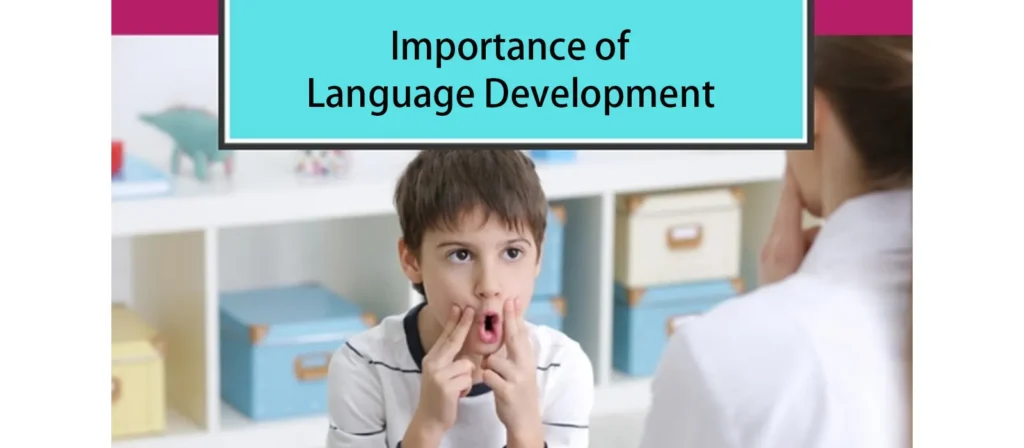
Tips for Developing Communication and Language Skills in Children
Everyday interactions are opportunities to enhance communication and language activities for preschoolers. Here are some effective strategies to consider:
- Engage in Conversations: Talk to your child often, even if they can’t fully respond. Please describe what you’re doing and seeing, and ask them questions. This models conversational skills and exposes them to new vocabulary.
- Read Together Regularly: Reading books with children is one of the most effective language arts activities for preschoolers. Choose age-appropriate books and encourage them to predict what will happen next or to describe the characters.
- Encourage Imitation: Young children learn by mimicking adults. Whether repeating words or imitating actions helps them learn new language patterns. For instance, if you say, “The dog is barking,” they may try to repeat it and expand their vocabulary.
- Play Games that Involve Talking: Simple games like “Simon Says” or “I Spy” encourage children to listen carefully and respond, promoting comprehension and expression.
- Be Patient and Responsive: When children attempt to communicate, show that you value their efforts by responding positively, even if their grammar isn’t perfect. This encourages them to keep trying.
By using these techniques, you’ll help children develop not only their vocabulary but also their understanding of how creative language activities for preschoolers work in conversations.
What to Remember When Developing Language Activities for Preschoolers?
Creating effective speech and language activities for preschoolers requires a thoughtful approach. Here are a few key principles to keep in mind:
- Keep it Simple and Fun: Preschoolers have short attention spans, so language activity plans for preschoolers should be engaging but not too complex. Children may lose interest if an activity feels too much like a chore. Using fun tools like puppets, toys, and games keeps things lively and entertaining.
- Use a Multi-Sensory Approach: Young children learn best through activities that engage multiple senses. Incorporate visual aids (like flashcards), auditory components (songs and rhymes), and kinesthetic elements (physical movement) to cater to different learning styles.
- Incorporate Everyday Contexts: The best language learning happens during daily routines. Encourage language development activities for preschoolers through conversations during mealtime, playtime, and other regular activities. For example, you could talk about the ingredients while cooking and ask them to describe what they see or smell.
- Allow for Exploration and Creativity: Activities should give children room for creativity and exploration. Let them come up with their own stories or explain their thought processes. This builds confidence in using language independently.
- Create a Positive and Encouraging Environment: Ensure that the environment is nurturing. Children should feel safe to experiment with language without fearing making mistakes. Praise their efforts to use new words or engage in conversation, reinforcing their willingness to communicate.
By focusing on these elements, you can create expressive language activities for preschoolers that teach language and make learning an enjoyable experience.
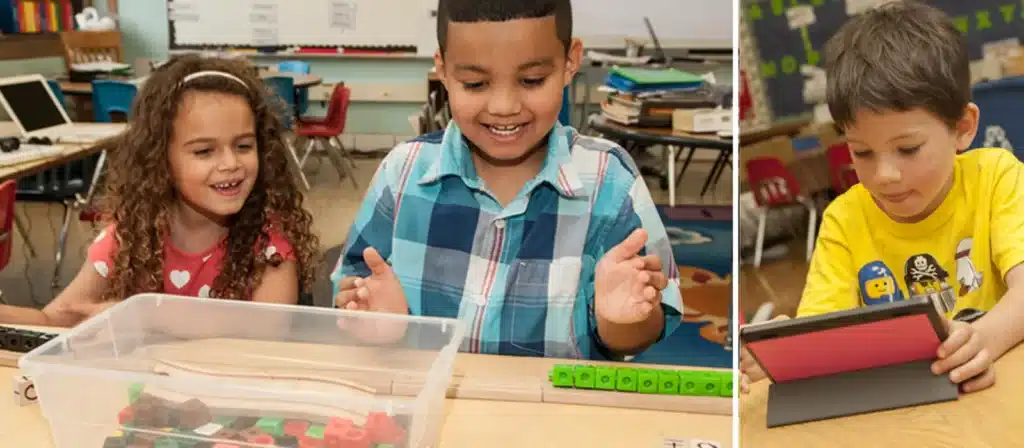
How to Integrate Language Learning into Daily Play?
Children learn best through play, and integrating language activities for preschoolers into these moments ensures they absorb new vocabulary naturally. But how can you effectively incorporate language skills activities for preschoolers into playtime?
- Encourage Storytelling Through Role Play: Give children props like costumes, dolls, or toy animals, and let them create their own stories. Role play encourages using descriptive language and helps them practice conversation skills.
- Narrate Their Actions: When children play, join in and narrate their actions. For example, if they build with blocks, you could say, “You’re making a tall tower! Look at how the blue block is on top of the red block.” This introduces new vocabulary in a natural context.
- Introduce New Words During Play: Whether it’s naming the colors of the toys or describing the texture of different materials, playtime is an opportunity to enrich your child’s vocabulary. Try to introduce new words and encourage your child to repeat them.
- Use Songs and Rhymes: Singing during playtime is another fantastic way to introduce new words and concepts. Songs with repetitive lyrics like “Old MacDonald Had a Farm” or “The Wheels on the Bus” help children remember words more easily.
- Incorporate Games that Involve Language: Simple games like “I Spy,” “20 Questions,” or charades can promote dual language activities for preschool. These games encourage children to think critically and express themselves clearly.
By seamlessly blending Montessori language activities for preschoolers with play, you can make learning an integral part of their day without making it feel like a lesson.
16 Language Activities for Preschoolers
Here’s a detailed look at 16 enjoyable and effective language arts activities for preschoolers that you can try with your preschoolers.
1. Picture Story Books
Reading storybooks with colorful pictures is one of the most effective ways to engage children in language and literacy activities for preschoolers. Choose books with simple narratives and plenty of images to help them connect words with visuals. While reading, ask open-ended questions like “What do you think will happen next?” or “Why is the character sad?” This interaction helps develop comprehension and critical thinking skills.
2. Puppet Shows
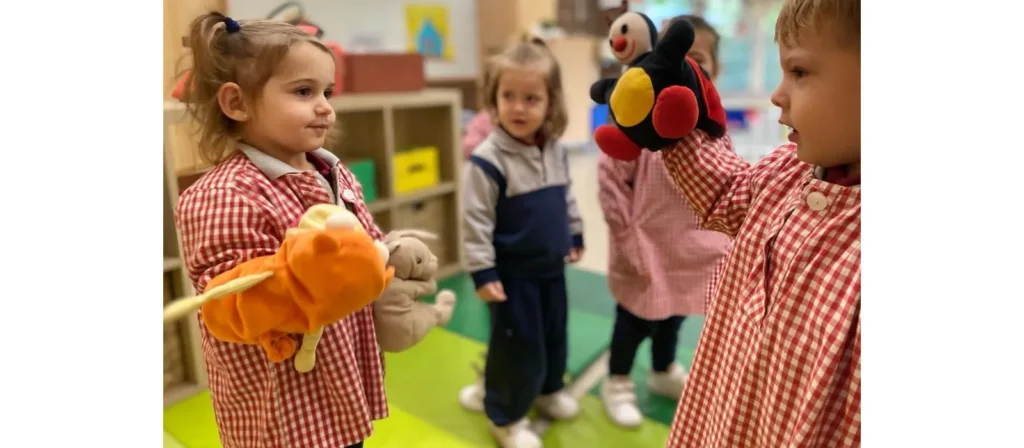
Puppets are a fantastic way to bring language to life. You can use puppets to enact stories or create dialogues. For instance, have a puppet ask questions and encourage the child to respond. This helps build conversational skills. It’s also a great opportunity for children to role-play different characters, helping them to experiment with language, tone, and emotion.
Puppet shows stimulate imaginative thinking and encourage shy children to participate in verbal exchanges.
3. Rhyming Games
Rhyming games help children learn phonetics and how words sound alike. A simple activity is to say a word like “cat” and ask the child to think of words that rhyme, like “bat” or “hat.” You can also read rhyming books like “The Cat in the Hat” by Dr. Seuss, filled with catchy rhymes that children can remember easily.
Rhyming helps children break down words into sounds, a key skill in learning to read.
4. Show and Tell
Show and Tell is a classic activity that promotes vocabulary development and public speaking. Encourage children to bring a favorite toy or object and explain why they like it, what it does, or where they got it. Ask follow-up questions to deepen their understanding and verbal explanations.
This activity boosts expressive language activities for preschoolers and improves confidence and social interaction.
5. Sing-Along Songs
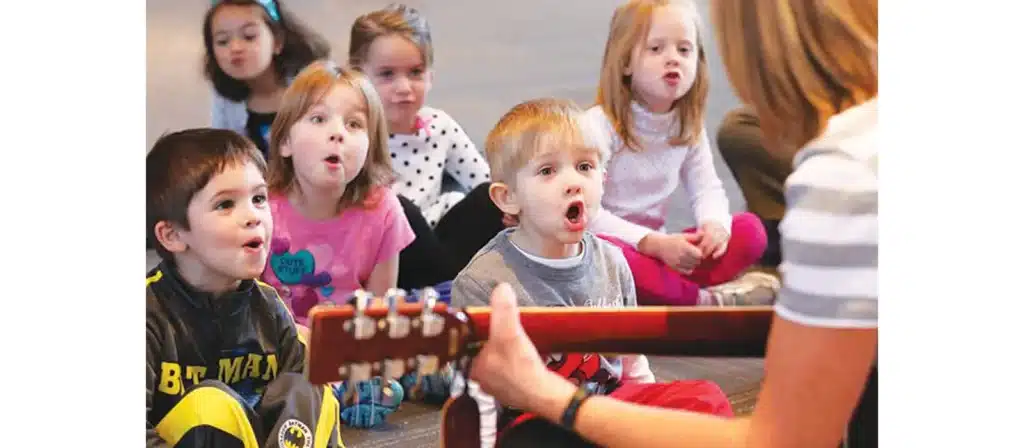
Songs with repetitive lyrics, like “Twinkle, Twinkle, Little Star,” help children pick up new words and phrases. Singing introduces rhythm and melody into language, which makes it easier for children to remember words. Encourage children to sing along and add action to the lyrics to make the activity more engaging.
Music stimulates both sides of the brain, making it an effective tool for learning language in a fun and interactive way.
6. Flashcards
Using flashcards is an excellent way to build word recognition. You can create or buy picture flashcards for common objects, animals, or letters. Show a card and say the word, then ask the child to repeat it. You can ask them to identify the objects as they become more familiar with the words.
Flashcards can also be used to teach simple sight words like “the,” “and,” and “it,” which are essential in early reading development.
7. Name That Sound
In this game, you make different sounds (like a car honking, a dog barking, or water running) and ask the child to guess what it is. This helps develop their listening skills and the ability to connect sounds with corresponding objects or actions.
8. Alphabet Puzzles
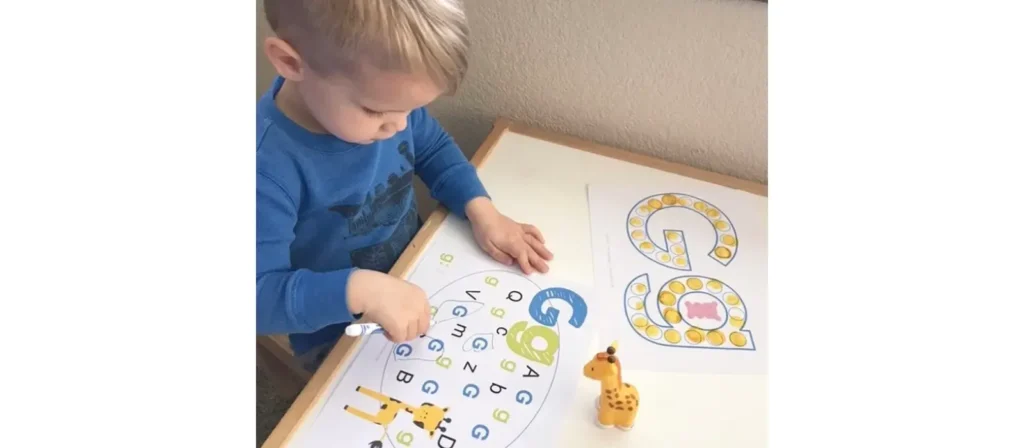
Alphabet puzzles are an engaging way to teach children letters and sounds. Choose puzzles where children can match each letter to an object that starts with that letter. For example, they can match the letter “A” to an apple or “B” to a banana.
Children can start recognizing the alphabet and connecting letters to sounds by associating letters with familiar objects.
9. Word Matching
This activity involves matching written words to pictures or objects. You can create cards with simple words like “dog,” “cat,” or “ball” and have matching picture cards. Ask the child to match the word to the correct image.
Word matching encourages recognition of common words and helps preschoolers understand the connection between words and their meanings.
10. Conversation Starters
Starting conversations with preschoolers helps build their verbal expression. Ask questions like, “What’s your favorite animal, and why?” or “If you could be a superhero, what powers would you have?” These open-ended questions spark creativity and help children practice forming complete sentences.
You’re helping them expand their vocabulary and reasoning skills by encouraging them to explain their thoughts.
11. Shape Talk
Shapes are a simple concept that can be expanded into language activity for preschoolers with autism. For example, ask the child to find objects in the room that match specific shapes like circles, squares, or triangles. As they search, encourage them to describe the shapes they find, such as “This ball is round like a circle.”
12. Labeling
Label objects around the room with simple words, like “chair,” “table,” or “door.” This can be especially useful in a preschool setting. Encourage children to read the labels and use those words in their conversations. For instance, “I’m sitting on a chair.”
13. Color Sorting
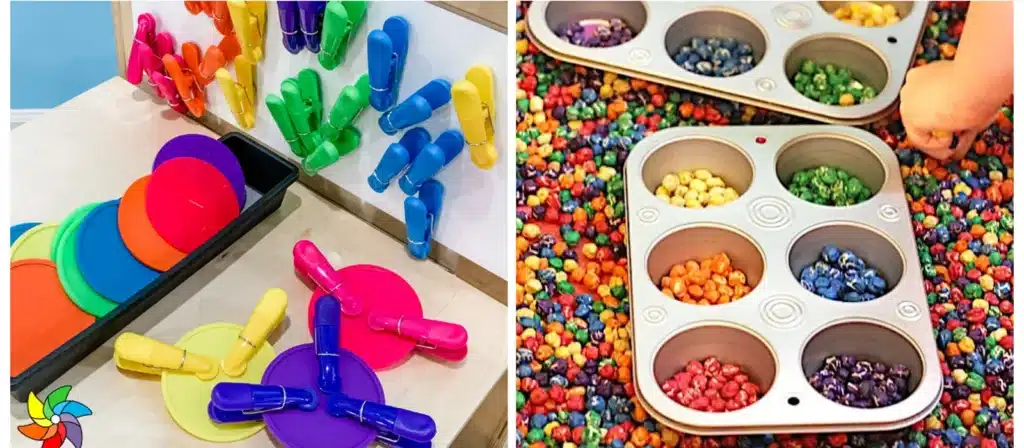
Sorting activities are great for developing descriptive language skills. Gather objects of different colors and ask the child to sort them into color groups. While sorting, talk about the objects and their colors: “This is a blue ball” or “Can you find a red toy?”
Color sorting enhances both categorization skills and language related to color recognition.
14. Follow the Leader
In this activity, you give the child simple instructions to follow, like “clap your hands,” “touch your nose,” or “jump up and down.” This game is fun to practice listening skills and understanding verbal directions.
Follow the Leader also helps children become more aware of action words and how they are linked to physical movements.
15. Role Play
Children love to engage in pretend play, and it’s a fantastic way for preschoolers to boost language activity. Set up a scenario, like a doctor’s office, grocery store, or classroom, and assign roles. Encourage the child to act out the roles and use relevant vocabulary.
16. Guess the Object
This sensory activity involves placing familiar objects in a bag and asking the child to describe them by touch without looking. They can say things like “It’s soft” or “It’s round” and then try to guess the object.
Guess the Object helps with descriptive language and stimulates sensory learning, helping children become more articulate in expressing their feelings.
Language Milestones for Preschoolers
Language development follows a typical pattern, though every child progresses at their own pace. Knowing the common language development milestones is important to ensure your child is on track. Here are some key language activities for preschool milestones:
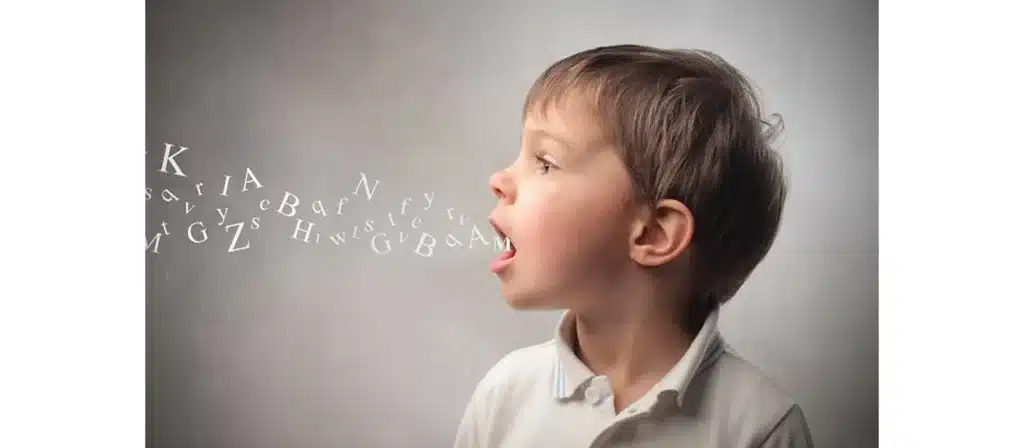
- By Age 2:
- Understands and follows simple instructions like “Give me the ball.”
- It uses simple phrases such as “more juice” or “want a cookie.”
- I can say around 50-100 words.
- By Age 3:
- Vocabulary grows to around 200-300 words.
- Can form short sentences of 3-4 words, such as “I want more.”
- Understands concepts like “in,” “on,” and “under.”
- Begins asking “why” and “how” questions.
- By Age 4:
- Speaks in full sentences with more complex grammar (e.g., “We went to the park today”).
- Can tell stories and describe recent experiences.
- Understands the concept of opposites (big/small, fast/slow).
- Starts recognizing letters and may know some by name.
- By Age 5:
- Uses sentences of 5-6 words, with more advanced grammar.
- Can engage in longer conversations and follow multi-step instructions.
- Recognizes rhyming words and can play word games.
- May begin to understand written language, like their name or simple words.
Tracking these milestones helps parents and educators identify potential delays early, ensuring children receive the support they need for successful language literacy activities for preschoolers.
Conclusion
Developing language skills in preschoolers doesn’t have to be a challenge. By incorporating these 16 fun and engaging activities, you can make language and literacy activities for preschoolers a natural part of their daily routine. Each activity fosters different aspects of communication, from vocabulary to listening skills, and will help set the foundation for future success in language and literacy.
Encourage creativity, interaction, and fun, and you’ll see how quickly language literacy activities for preschoolers blossom in young children.

